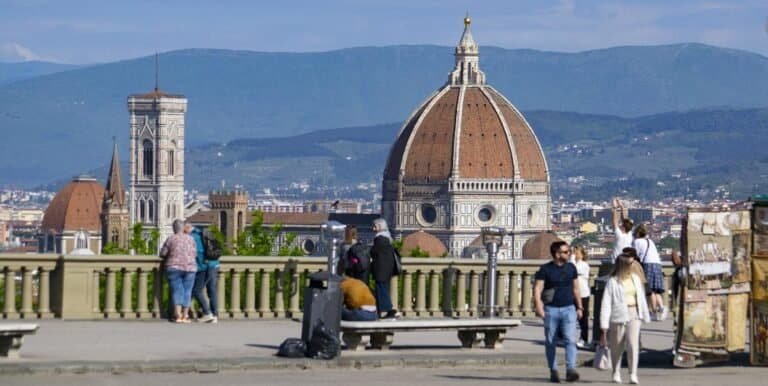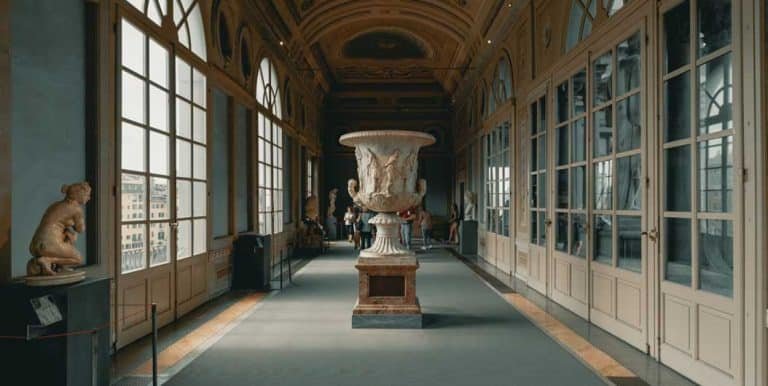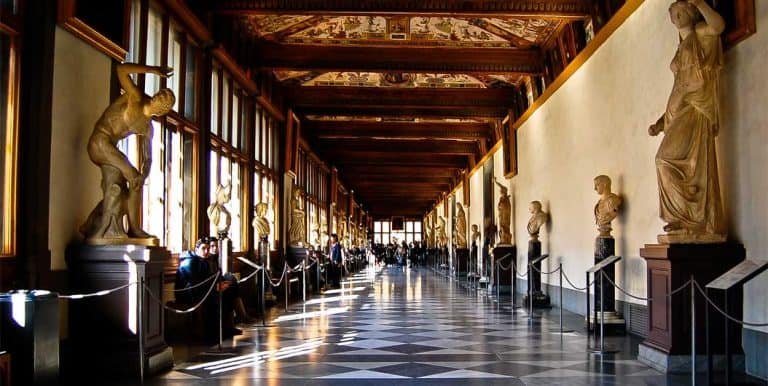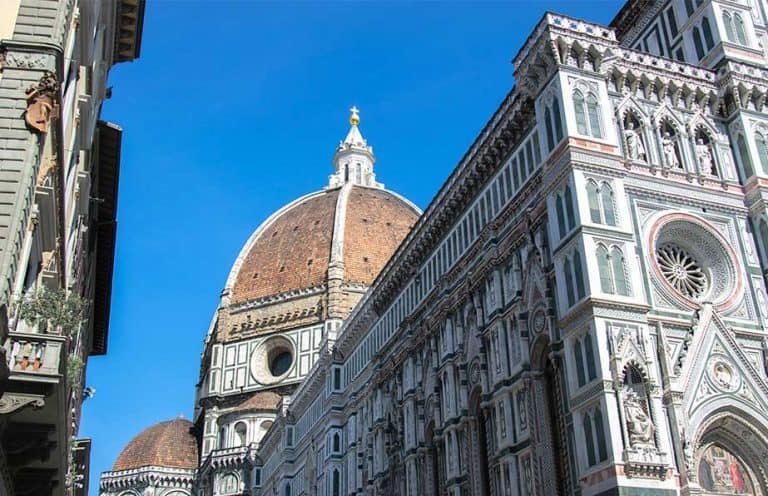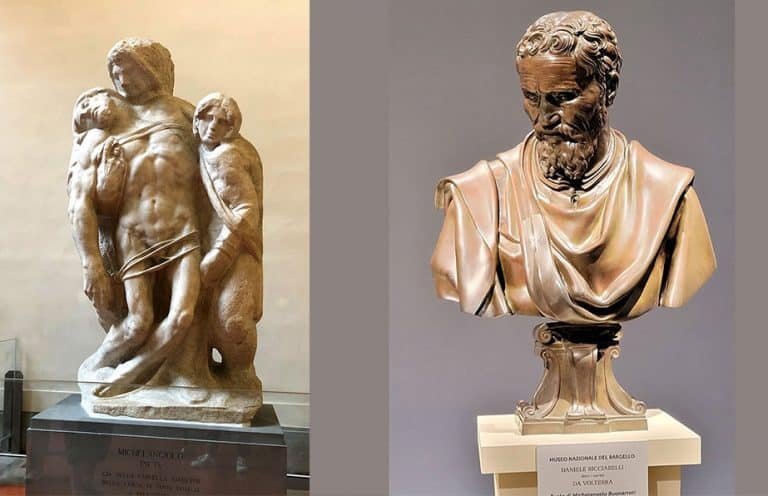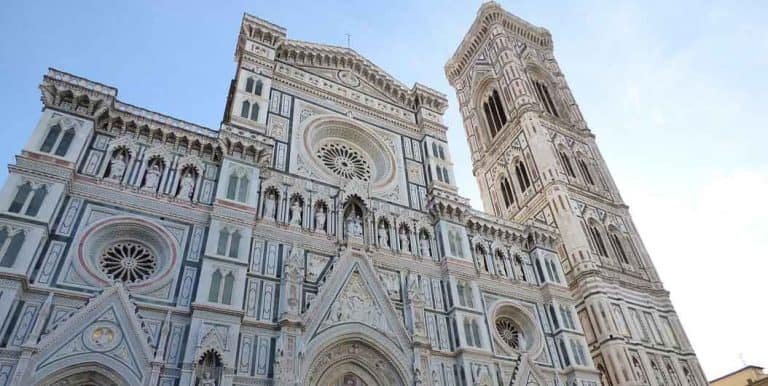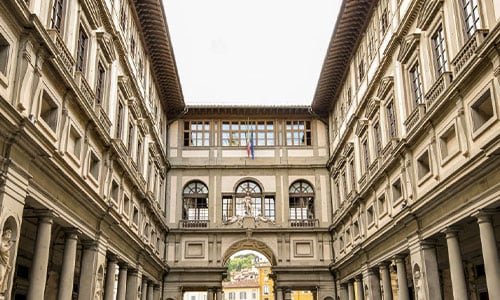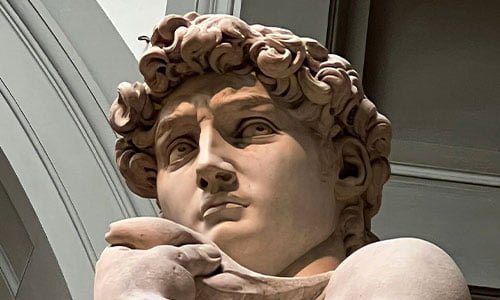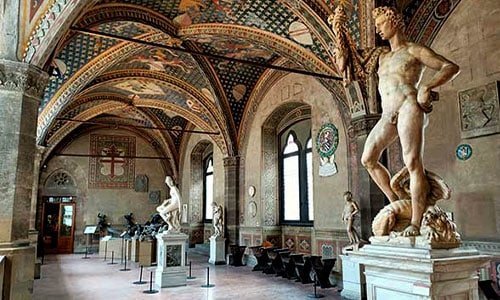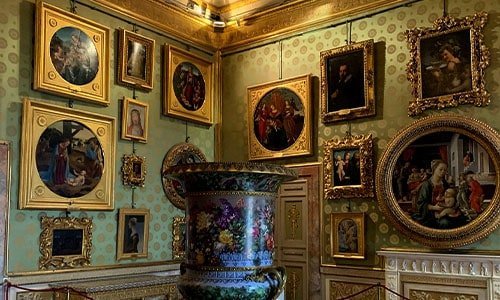The Duomo, Florence (Cathedral of Santa Maria del Fiori)
We can say what we want about religion, but we all agree on one thing: religion has been the driving force for the development of art.
It was religion that pushed for the representation of God, to create places of worship and objects of all kinds. Thanks to religion, therefore, we have seen art become what it has become. It has given life to painting, architecture, music and any other artistic manifestation.
Among all the artistic developments given by religion, the churches are the ones that most strike our eyes: they are majestic, monumental and contain works of art from every historical period. Impossible to be charmed by a church.
Italy is home to the most beautiful and ancient churches in the world, at least as far as the Catholic religion is concerned. It is very difficult to meet a person who does not know at least one of these magnificent churches.

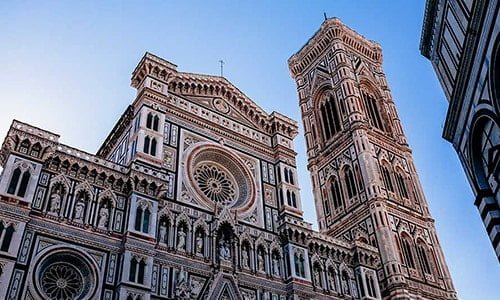
Among all the Italian churches, we decided to talk about the Cattedrale di Santa Maria del Fiore in Florence (or Duomo Florence), one of the most beautiful churches in Tuscany.
In this article we will tell you everything there is to know about this magnificent cathedral.
In addition to being Florence’s famous Duomo, di Firenze is also known as Italy’s Renaissance Birthplace. The church is officially dedicated to the Virgin Mary. A cathedral is a church for bishops. Florence has a number of Catholic churches. The Duomo is however the home church of the Roman Catholic Archdiocese of Florence. It is comprised of five monuments: Santa Maria del Fiore Cathedral, Brunelleschi’s Dome, Giotto’s Campanile (Bell Tower), San Giovanni Baptistry, and Santa Reparata Church and Opera Museum.
Duomo Florence Cathedral: some general information
As mentioned, the real name of the Duomo Florence is Cattedrale di Santa Maria del Fiore. This church is called the Minor Basilica and is also one of the national monuments of the Italian state.
This cathedral has become the symbol of the city of Florence and is also its major church. It is the third largest church in Europe, after the well-known Basilica di San Pietro of Rome and the Duomo di Milano.
The construction of the Cattedrale di Santa Maria del Fiore lasted several centuries and it is known for its dome, Brunelleschi’s dome, known for being the largest masonry dome ever built.
The interior of the Cattedrale di Santa Maria del Fiore is rich in works of art and contains the largest fresco ever created. This church can hold up to 30,000 people.
duomo florence history
The history of the Duomo of Florence and its birth are the result of a series of political rather than religious events.
Where now stands the current Cattedrale di Santa Maria del Fiore, before the thirteenth century there were already religious buildings, but these were not of great importance or majesty.
However, when the city of Florence began to increase its political and cultural importance, various architectural and artistic works began to be built on its territory and, wanting to rival other cities such as Siena, it was decided to replace the pre-existing church of Santa Reparata and other surrounding buildings in what was renamed Piazza del Duomo, with a church of enormous size and immeasurable beauty.
Being an ambitious project, it took several centuries to complete the church and its construction underwent slowdowns, suspensions, modifications and much more as historical and other events that slowed its completion.
The construction of the Cattedrale di Santa Maria del Fiore about 7 centuries: it began in 1296, but the completion of the central body and the naves took place in 1380 while it will be necessary to wait until 1421 to see the tribunes and drum completed. About two centuries later the famous dome was completed, called Brunelleschi’s Dome (1471), while the facade was completed only in 1887 and the bronze doors were completed in 1903.
The work for the construction of the Cattedrale di Santa Maria del Fiore, in short, was really long but now it allows us to enjoy a work of art of immeasurable beauty like few others exist in the world.
Neo-Gothic Facade of the Duomo Florence
Emilio de Fabris designed the current neo-Gothic facade of the Duomo and completed it only in 1887. Only half of the original Gothic facade was complete when the building was demolished in the late 16th century. Models and sculptures of this facade are in the cathedral’s museum. When Italy was finally united into one political entity in the late 19th century, Florence briefly became the capital of the new kingdom. The cathedral’s new facade was finally completed in the course of several grandiose building projects. Neo-Gothic architecture has inevitably been criticized by some. After nearly 150 years, no one has actually demanded that it be torn down again despite the quality of the workmanship.
duomo cathedral florence opening hours and reservations
Monday-Saturday: 10:15 am – 4:30 pm (closing at 5:00 pm)
Sundays & religious celebrations: Closed, due to worship.
Admission is Free
brunelleschi’s dome
When you look at a photograph of the Cattedrale di Santa Maria del Fiore (duomo florence) in Florence, the first thing that strikes you is its dome: huge, majestic, monumental. The Brunelleschi’s Dome is certainly the best known symbol of the Duomo of Florence and of the city of Florence itself, which makes its skyline characteristic.
It boasts two records: at the time of construction it was Brunelleschi’s dome, it was the largest in the world and now it is the largest masonry dome ever built.
Its large size created a mystery about its construction. Since the classical construction technique was not used, in fact, more hypotheses have been formulated on its construction.
In addition to being an excellent panoramic point of view and being a mysterious and majestic architectural work, the Dome of the Cattedrale di Santa Maria del Fiore in Florence has been internally decorated with religious-themed frescoes that fascinate visitors to the Florence Cathedral (duomo florence) every year. for this reason it is worth visiting it when you go to Florence.
brunelleschi’s dome opening hours
Weekdays (Monday-Friday): 8:15 a.m. – 7:30 p.m. Last entry 6:45 p.m.
Saturday: 8:15 a.m. – 5:15 p.m. Last entry 4:30 p.m. Last entry 4:30 p.m.
Sunday & public holidays: 12:45 p.m. – 5:15 p.m. Last entry 4:30 p.m.
duomo florence giotto’s bell tower ( Giotto’s Campanile )
As mentioned, the Cattedrale di Santa Maria del Fiore in Florence is a jewel of art and architecture like few others in the world and its construction involved many famous artists from various eras who took part in the realization of a part of this magnificent minor basilica.
Among the various artists who have collaborated in the construction of the Florence Cathedral is Giotto, who created the bell tower project.
The construction of the bell tower began in 1298 and ended in 1359. It has been attributed to Giotto although he participated in its construction for a very few years (about three), but then because the bell tower of the Cattedrale di Santa Maria del Fiore is called “Giotto‘s” ?
The answer is simple: Giotto made a massive contribution to giving the bell tower of the Cattedrale di Santa Maria del Fiore the look we can admire today. This extraordinary artist, in fact, chose the theme of the decorations and the marbles that were used. Even after Giotto‘s death, his successors (Andrea Pisano and Francesco Talenti) continued on the path he traced.
But what can we admire on this bell tower?
If, in fact, the interior does not offer particular artistic objects to admire and is only a way to enjoy the magnificent panorama of Florence, the exterior of Giotto’s bell tower is full of statues and bas-reliefs that deserve to be admired.
The bas-reliefs and the statues have different themes that are contained in these groups: Allegories of the arts and professions, The Planets of the Solar System, Episodes and Characters from the Bible (Birth of Adam, Biblical Prophets etc …), Episodes from mythology Greek, historical figures (Plato, Euclid, Pythagoras etc …).
The bas-reliefs and statues that, however, we can admire today on Giotto’s bell tower are only copies. The originals are in the Museo dell’Opera Del Duomo.
giotto’s bell tower opening hours
Open every day: 8:15 am – 7:00 pm (closing at 7:45 pm)
florence cathedral baptistery (The Baptistery of San Giovanni Battista.)
Although not part of the Florence Cathedral (duomo florence), the baptistery of San Giovanni Battista stands in the same square and is dedicated to the patron saint of the city.
This octagonal-shaped place of worship is also a minor basilica and initially stood outside the city walls. Only when the works on the duomo florence and Piazza del Duomo began, it was placed in the center of the city of Florence.
In it the knights and poets were named, but in addition to this in the baptistery of San Giovanni Battista the celebrations of the patron were also carried out. All this made this place of worship an important place for the city of Florence and its social events of particular importance.
Being an important place, the Baptistery could not fail to be decorated with attention and with works of art worthy of the sacredness of this place.
We notice the attention and beauty even before entering, observing its bronze doors made by Pisano and Ghiberti, and continues with the interiors that are reminiscent of the Pantheon in Rome. However, it is above all the internal mosaics that arouse the amazement of people for their fine workmanship. They represent scenes taken from the Bible and made by various artists including Cimabue.
Florence baptistery doors
In the Baptistery building, Lorenzo Ghiberti is most associated with its north and east doors, which he designed together with his workshop. The north doors were designed by Ghiberti in 1401 after he won a competition. Ghiberti competed against Filippo Brunelleschi, who would become the architect of the duomo florence, in the famous Wool Merchants‘ Guild contest.
florence baptistery opening hours
Open every day: 9:00 am – 7:30 pm (closing at 7:45 pm)
museum of opera of saint maria of fiore ( The Museum of the Opera del Duomo)
The Museo dell’Opera del Duomo is located in Piazza del Duomo in Florence and collects works of art from the Florence Cathedral, the Baptistery and Giotto’s Bell Tower.
This museum was born almost by chance. Initially, the land where this museum was built was used as a lumber yard by Brunelleschi during the construction of his famous Dome. Only later was a building built which, however, was not intended as a museum but for the Offices of the Opera Del Duomo, an institution created to take care of the construction of the Cattedrale di Santa Maria del Fiore in Florence.
Subsequently, the Opera del Duomo had to decide what to do with the works of the sketches and models that had accumulated during the construction of the Cathedral. In the end, he opted to designate some of his rooms as a museum and include these works.
Now, in the duomo florence Museum we can find many works by many famous artists of the time (including Giotto, Michelangelo and Donatello) but also models designed for the creation of the other works in Piazza del Duomo that make us better understand the mastery and the commitment of the artists of the time in creating the Cattedrale di Santa Maria del Fiore in Florence and all the buildings in Piazza del Duomo in Florence.
How to visit the Duomo Florence
First, we must emphasize that we are talking about places of worship, so the first thing to do to visit these places is to have a very important thing which is respect.
It doesn’t matter how old you are or what your religious beliefs are or if you are an atheist: when you visit these places you must have respect for the sacredness of the place and for what it represents for millions of faithful around the world.
That said, the visit to the complex of buildings that make up the Opera del Duomo is almost completely paid and is based on three types of tickets that allow you to carry out different visits depending on what you want to see.
The only part that is completely free is the Cathedral itself. Entering it and admiring its artistic wonders is completely free and this visit can be done at almost any time (except Sundays and in the case of religious celebrations), everything else, however, will need to pay an entrance ticket.
To find out more about the Duomo Florence Tickets, Duomo Florence Tours and Duomo Florence hours, click on the link below and you will find all the necessary information: www.duomo.firenze.it
florence duomo museum hours
Open every day: 9:00 am – 7:30 pm (closing at 7:45 pm)
Closed on the first Tuesday of each month.
FLORENCE DUOMO COMPLEX NEW TICKETS FROM 1ST MARCH 2022, AND HOW DO THEY WORK?
From 1 March 2022, there will be 3 options for tickets for the Piazza del Duomo complex.
1) Brunelleschi Pass: includes all the monuments (Dome, Bell Tower, Museum, Baptistery, Santa Reparata); it is valid for three calendar days from the date of the visit booked during the purchase phase (e.g. I purchased the climb to the Dome for 2 January at 11:15 am, the ticket will be valid on 2, 3, 4 January). To access the Cupola, it is mandatory to book a time slot; for all other monuments, no hourly reservations are required, and the opening/closing times apply. The validity starts from the date selected for a visit to the Dome.
2) Giotto Pass: includes all monuments, except the Dome (Bell Tower, Museum, Baptistery, Santa Reparata); it is valid for three calendar days from the date of the visit booked during the purchase phase. No hourly reservations are required to access the monuments. The opening/closing times apply.
3) Ghiberti Pass: includes three monuments (Museum, Baptistery, Santa Reparata); it is valid for three calendar days from the date of the visit booked during the purchase phase. No hourly reservations are required to access the monuments. The opening/closing times apply.
Tickets or reservations are not required for access to the cathedral: it is free of charge. Sundays and religious holidays are closed to tourists.
The monumental complex will be closed on 17th April (Easter), 25th December & 1st January.
Ticket offices: Piazza San Giovanni no. 7 and Piazza Duomo no. 14/A: open every day 8:00 am – 7:15 pm.
Three passes are valid for three calendar days starting at midnight and one minute (00:01) of the selected day. Access to the Dome is the only time and date that must be respected. It is not possible to change reservations.
Brunelleschi Passes are valid from the date chosen for a Dome visit.
| Brunelleschi Pass (Dome, Bell Tower, Museum, Baptistery, Santa Reparata) | Full: 30€ | Reduced: 12€ ( 7 to 14 years) | Free: 0€ (under 7 years) |
| Giotto Pass (Bell Tower, Museum, Baptistery, Santa Reparata) | Full: 20€ | Reduced: 7€ ( 7 to 14 years) | Free: 0€ (under 7 years) |
| Ghiberti Pass (Museum, Baptistery, Santa Reparata) | Full: 15€ | Reduced: 5€ ( 7 to 14 years) | Free: 0€ (under 7 years) |
Persons with disabilities and their carer: subject to assessments and considerations for people with disabilities, upon verification of appropriate documentation, and possibly for the companion.
For any information write to: accessibilita@duomo.firenze.it
You can find more information on the official website of the Florence Duomo complex.
Duomo Florence skip the line tickets and tours -2025
QUESTIONS AND ANSWERS
Who painted the Duomo of Florence?
The painting on the inside of the Dome was designed by Giorgio Vasari and began in 1572. Vasari died before it was completed, so Federico Zuccari completed it.
Duomo Florence dress code
Follow the dress code at the Duomo Florence in order to avoid hassles or disappointments. You must wear respectful clothing at the Duomo because it is a religious site. Among the prohibited items are tank tops, short shorts, sandals, hats, and sunglasses. Knees, shoulders, and toes must be covered. Both men and women must adhere to the code.
How many steps to climb the Duomo?
Wear comfortable shoes for the climb up the Duomo, which consists of 463 steps through narrow winding corridors and fairly steep staircases. This activity is not suitable for those who suffer from mobility issues, heart conditions, or claustrophobia, or vertigo.
Can I Only Book Online?
Currently, booking online is recommended for management and security reasons. Tickets may also be purchased from Monday through Sunday at the official Ticket Offices located at Piazza del Duomo no. 14/A and Piazza San Giovanni no. 7. Ticket offices are open every day from 8:00 a.m. to 7:15 p.m.
USEFUL INFORMATION
From 1 March 2022, there will be 3 options for tickets for the Piazza del Duomo complex.
1) Brunelleschi Pass: includes all the monuments (Dome, Bell Tower, Museum, Baptistery, Santa Reparata).
Ticket Price Full: 30€, Reduced: 12€
2) Giotto Pass: includes all monuments, except the Dome (Bell Tower, Museum, Baptistery, Santa Reparata).
Ticket Price Full: 20€, Reduced: 7€
3) Ghiberti Pass: includes three monuments (Museum, Baptistery, Santa Reparata)
Ticket Price Full: 15€, Reduced: 5€
How to get there
Book online
Accommodation in Florence
Booking.comread our blog
-
First Time in Florence? Practical Travel Tips, Mistakes to Avoid & Where to eat
Exactly What to Do in Florence (For First Timers) Let’s start with the most important truth: Florence is not a day trip. Not if you want to truly experience it. Sure, you can race through its highlights in twenty-four hours, but you’ll leave with a camera full of photos and a heart still empty. Even…
-
Best way to visit Uffizi Gallery
Best way to visit Uffizi Gallery – valuable tips for visiting the Uffizi Gallery in Florence Visiting the Uffizi Gallery in Florence is a must-do experience in life. Here are our tips for thoroughly enjoying the visit. Giorgio Vasari designed The Uffizi Gallery in the mid-16th century to house Florence’s 13 most essential magistracies, known…
-
what to see in Florence in one day
what to see in Florence in one day: walking itinerary in the historical center What to see in Florence in one day. Itinerary on foot from Santa Maria Novella to Santa Croce, through the most characteristic neighborhoods of the Tuscan capital. Florence has always been one of my favorite Italian cities of art. Elegant, rich…
-
Florence’s Duomo has an ox’s head that no one noticed
Many beautiful sculptures decorate the façade as well as the sides of the world-renowned Cathedral of Santa Maria del Fiore in Florence, but they are often overlooked, particularly when viewed through a quick, unfocused glance. Booking.com One particular sculpture, which is likely to be not noticed by the majority of people, appears to be unnatural…
-
The Secret Room of Michelangelo
Secret Room of Michelangelo remained hidden for centuries until it was discovered by chance in 1975. Beneath the Medici Chapels in the Basilica of San Lorenzo in Florence, a tiny room was found that is believed to have been Michelangelo’s hiding place for a short period in 1530. In the room where he was seated, Michelangelo…
-
The Cathedral of Florence is one of the wonders of Italy
The Cathedral of Florence, or Santa Maria del Fiore, is the third-largest church in the world, following St. Peter’s in Rome and St. Paul’s in London.
